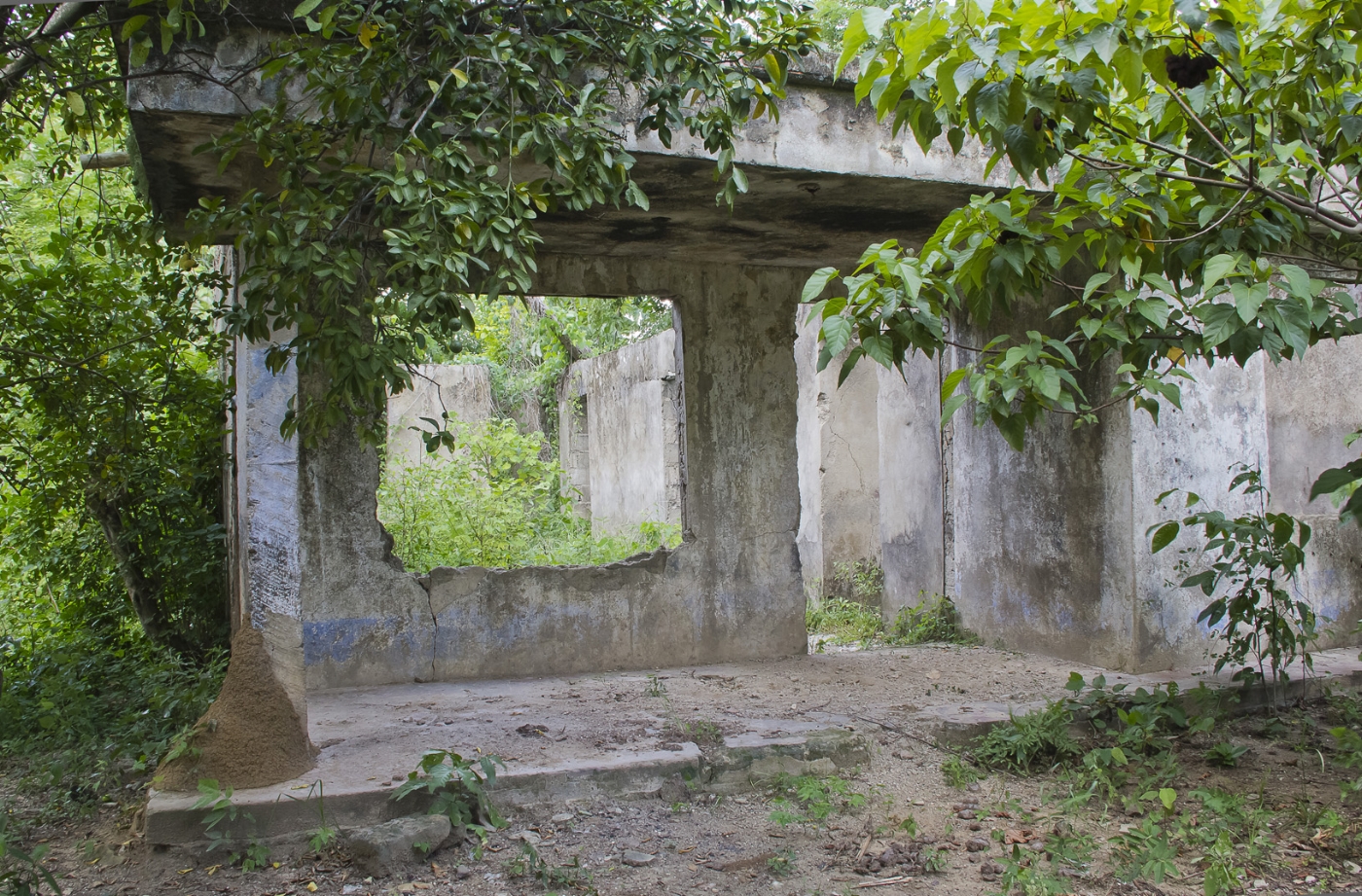
This series of photographs document the reconstruction and transformation of a community through an art project proposed by women, “weaving for peace”. It is based on the idea of recreating stories of hope and reconciliation through “weaving.” The first four images present the traces of the destruction of the town of Mampujan in the Caribbean region of Bolivar in Colombia by the Guerrilla in March 2002.
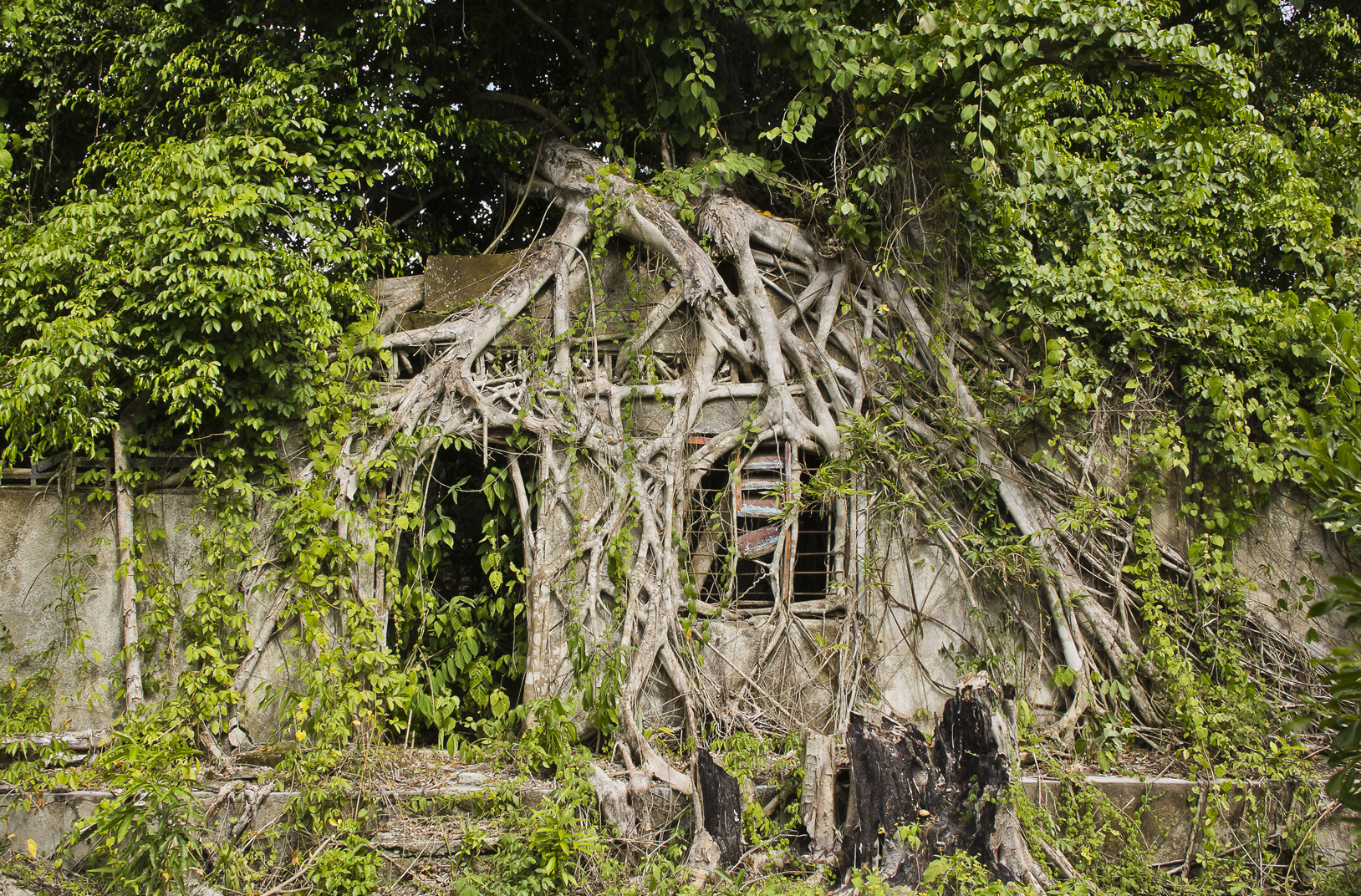
This photo represents the way nature is erasing traces of violence by taking over the physical remains of destroyed houses.

In this picture the room was transformed into a natural landscape. There are, however, still remains of human present that remind us of past memories, as for instance the color of the painting on the wall.
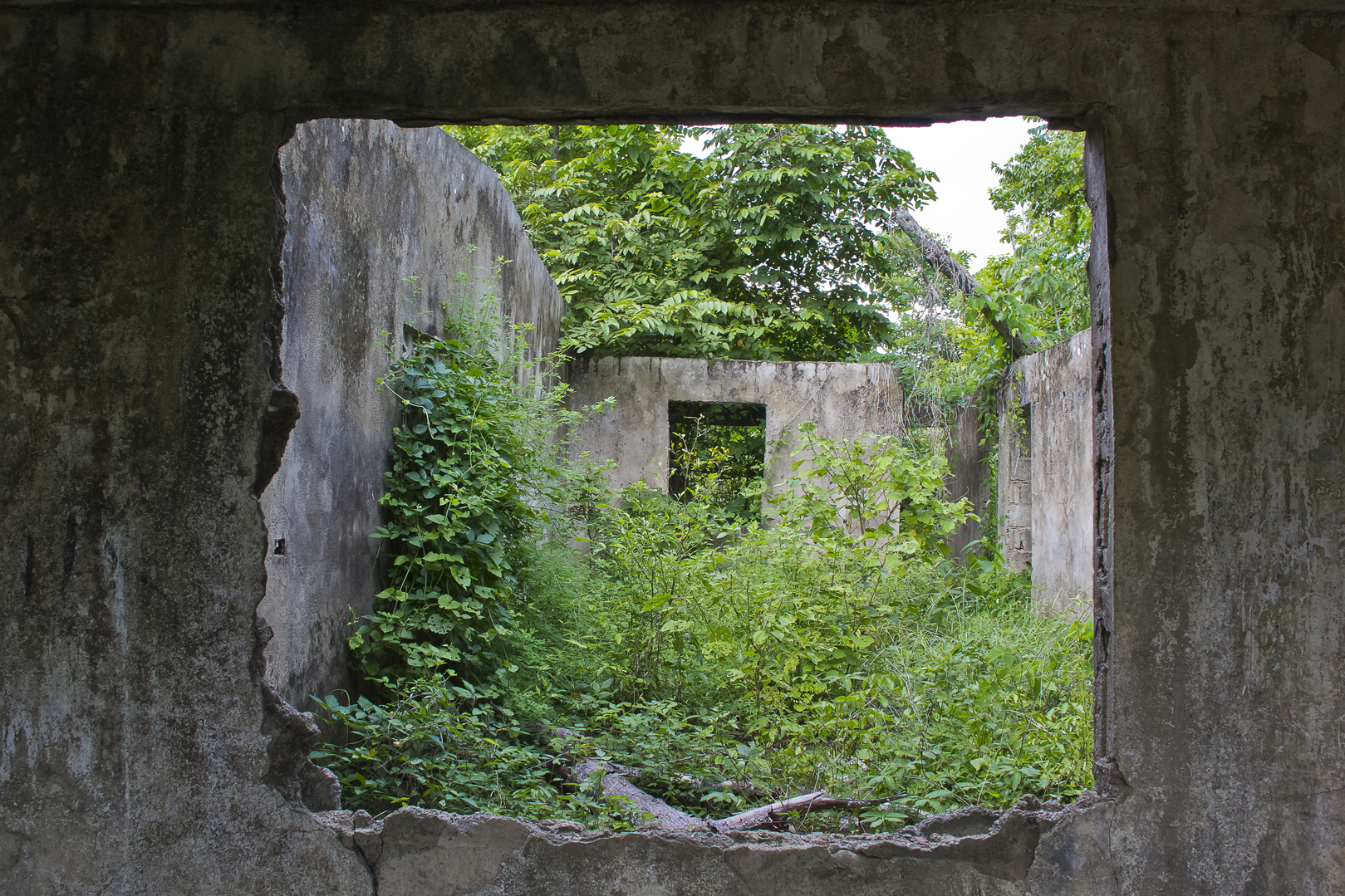
In this photo, I was attracted by the light and the frame of the window as it encloses the passing time, as well as, the traces, vestiges and shadows of the natural surroundings it embraces.
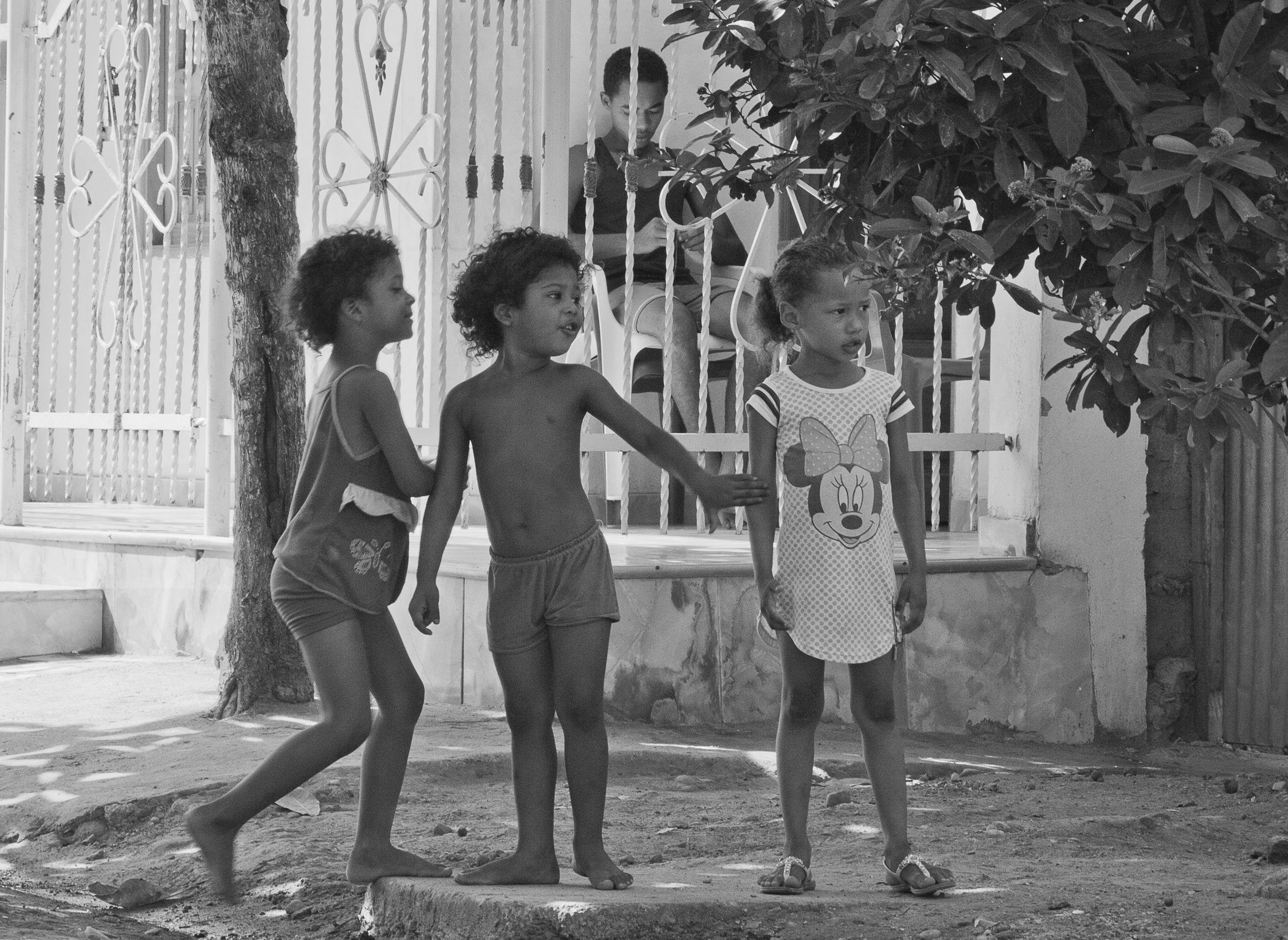
In this image girls are playing in front of a re-contructed house, they represent the vigorous life of the emerging town after fourteen years of rebuilding done step by step by the demanding enterprise of their parents work.
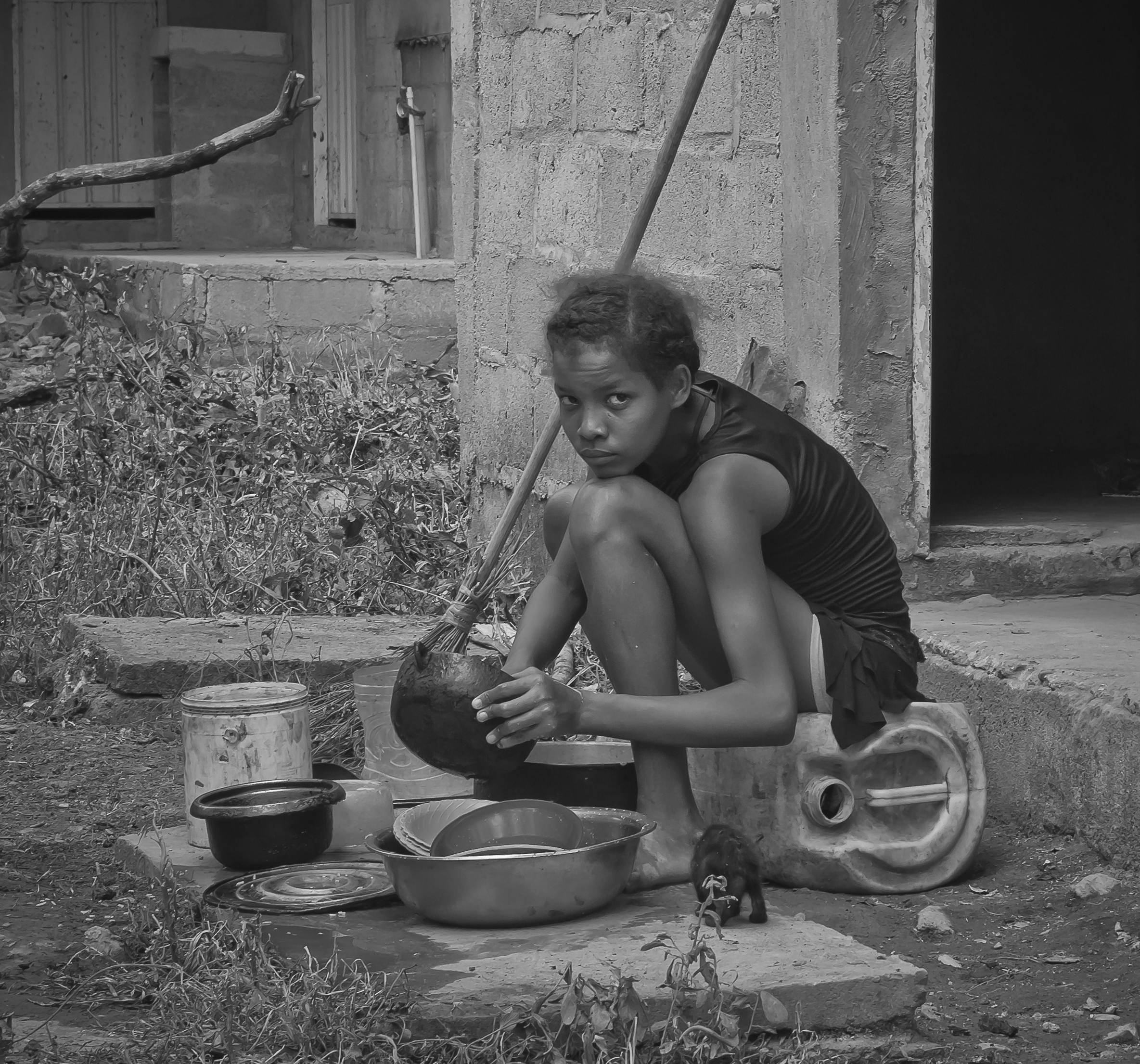
In this scene, I was impressed by how the transition to a reinvigorated peaceful environment influences the town life. This young girl adapted her kitchen outside of her house. She improvised a dish-washer with rustic tools, It seems she is washing her sadness while she is forgotten the violence.
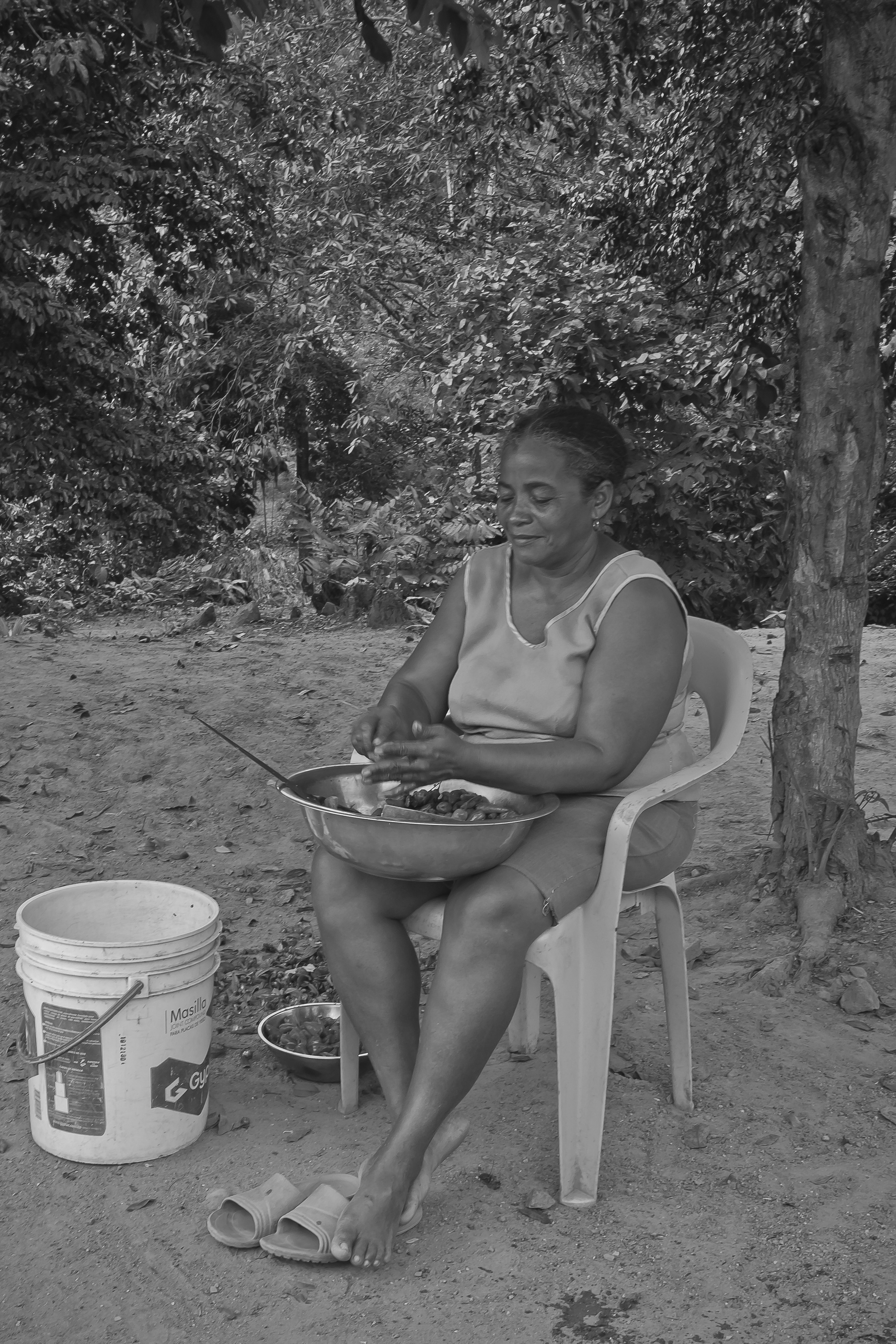
This woman is one of the leaders of the “weaving for peace” project. She helps the community through her teachings, and by providing them the materials and the space to gather. It is intersting to see how women work every day with energy, hope, and desire so see changes in their community.
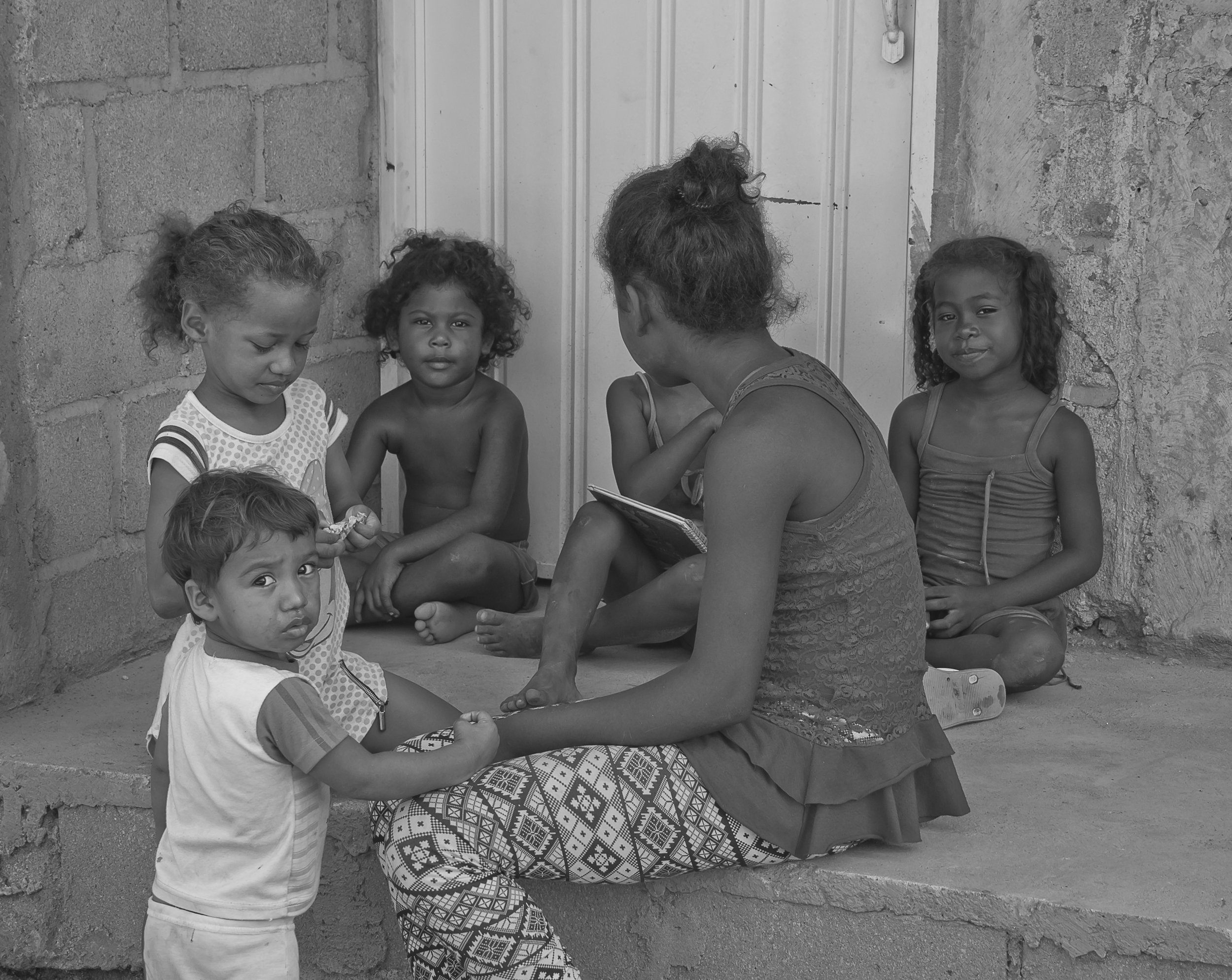
This is how good actions by young people promote peace by helping children to study, and to use their time doing meaningful activities to the community. They are even sometimes giving advices and promoting good habits. Here a young girl takes care of the kids while their parents are working.
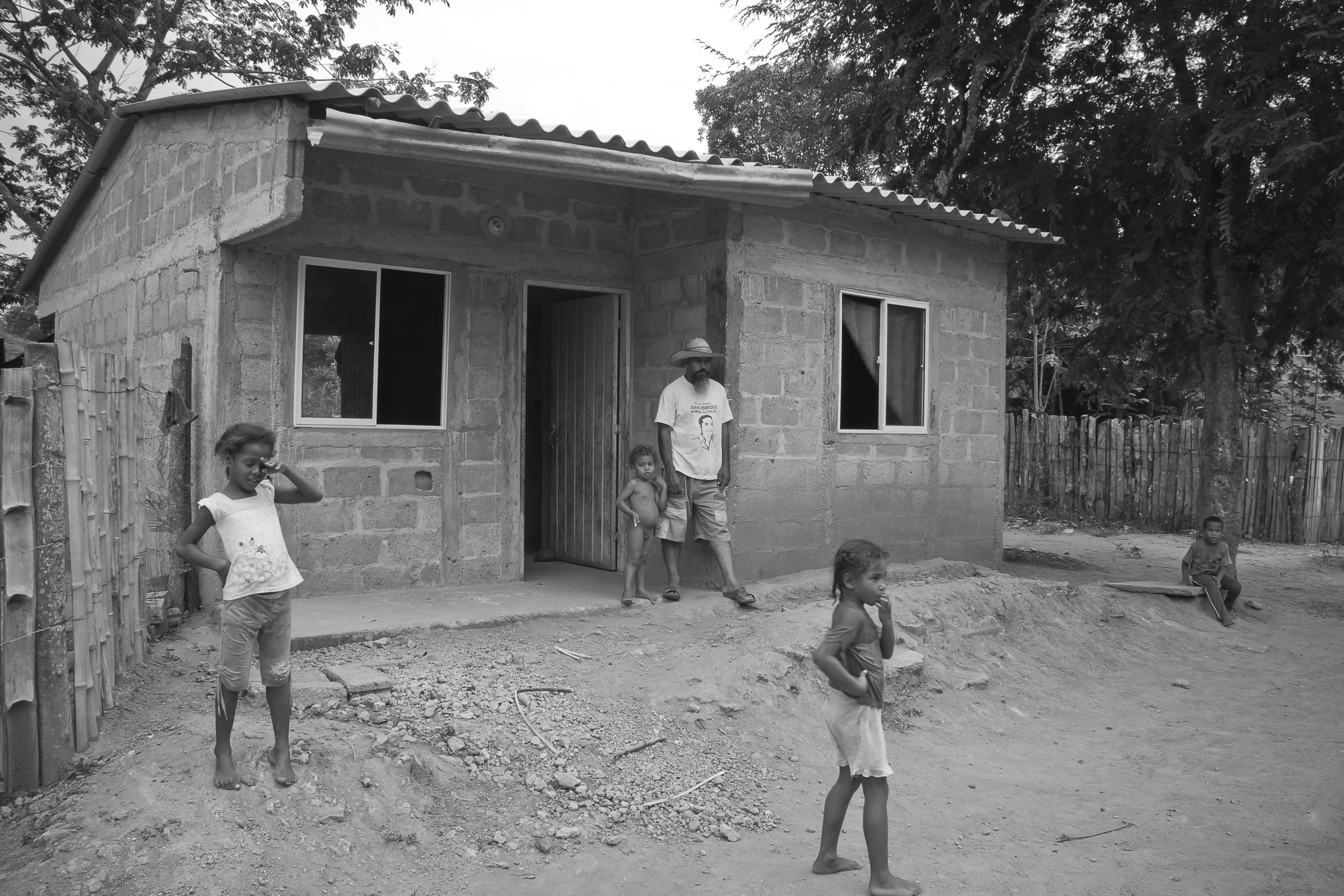
This is a house donated by the Colombian Government. It is a small house for a single family. They are now back to their land where they can farm, keep livestock and eventually improve their house for better conditions.
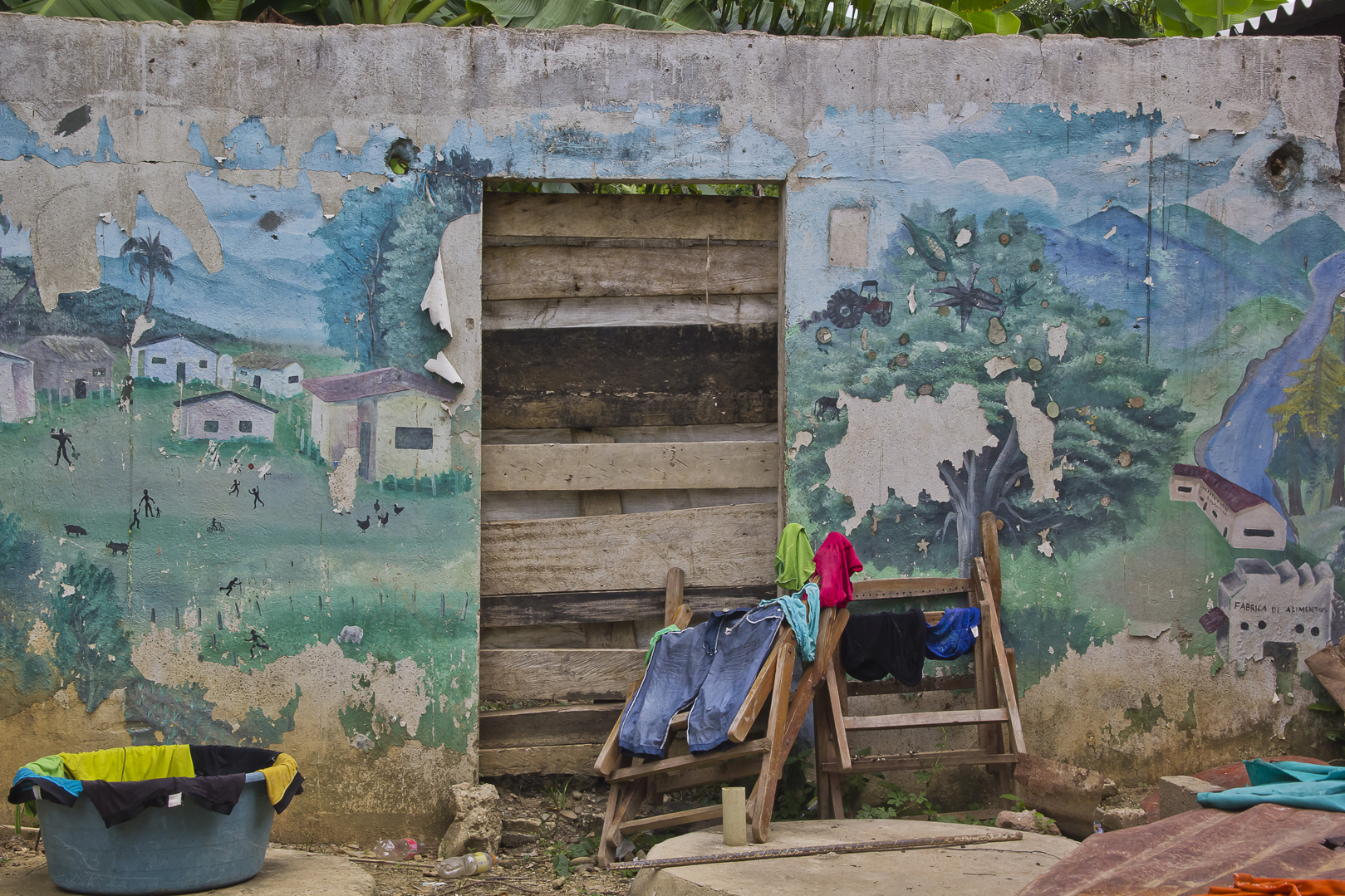
This image shows that this space was at a given point in time a children’s room. The same space was used to create a mural that served as inspiration for one of the weaved pieces.
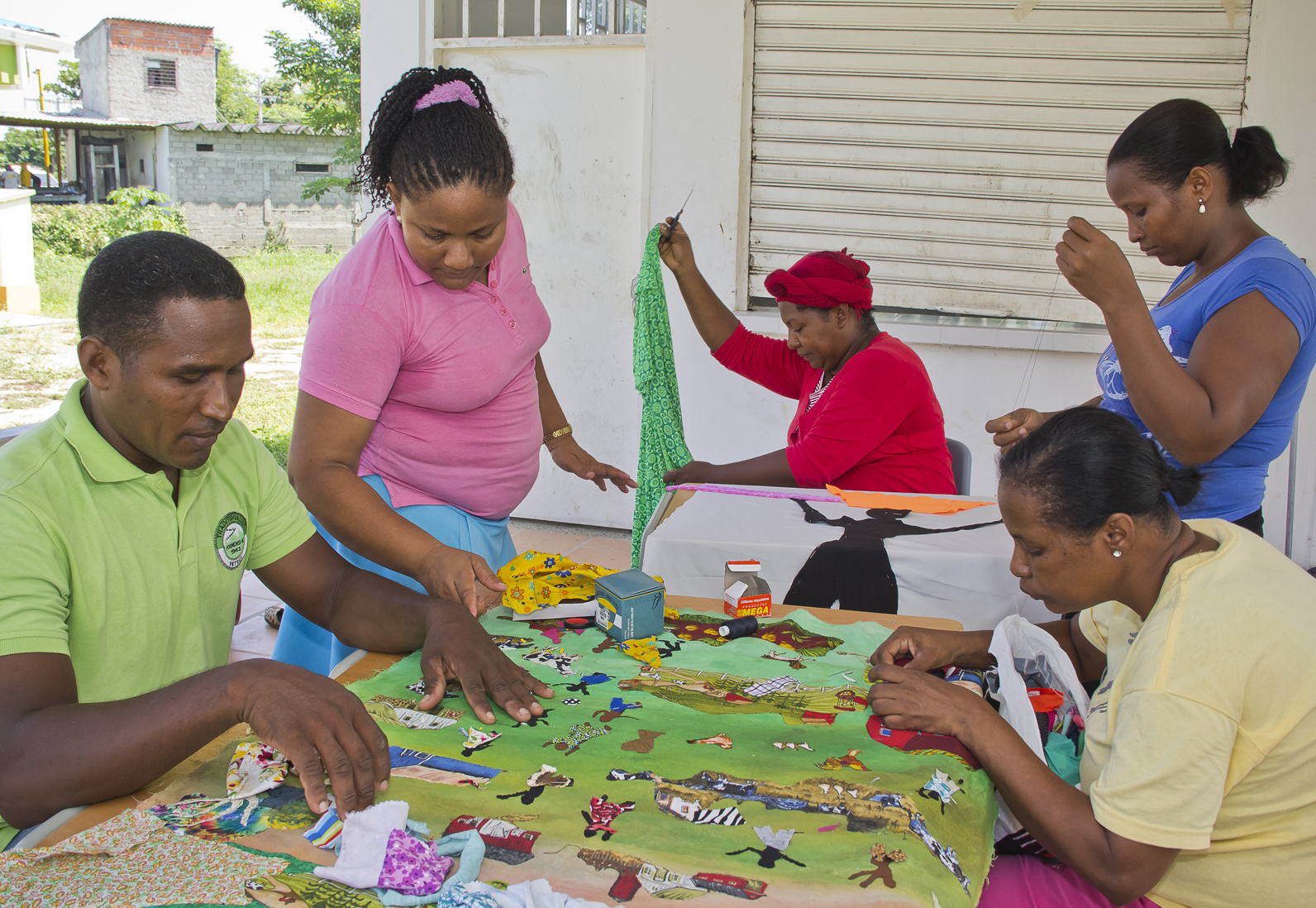
This image is very representative of Mampujan’s community. It tells the experiences of its inhabitants as they go through the process of relief and forgetting their violent past. The rebirth of the town is then illustrated through very expressive and colorful figures weaved on the fabric.

Working in community is for Mampujan’s inhabitants a good opportunity also for economic benefits achieved by the sale of their fabrics in local traditional craft markets.

By rebuilding past memories and seeing then as an opportunity for change, Juana tries to make innovative designs that relate to her own culture, promoting, at the same time, diverse social values and presenting its traditions to a large audience.
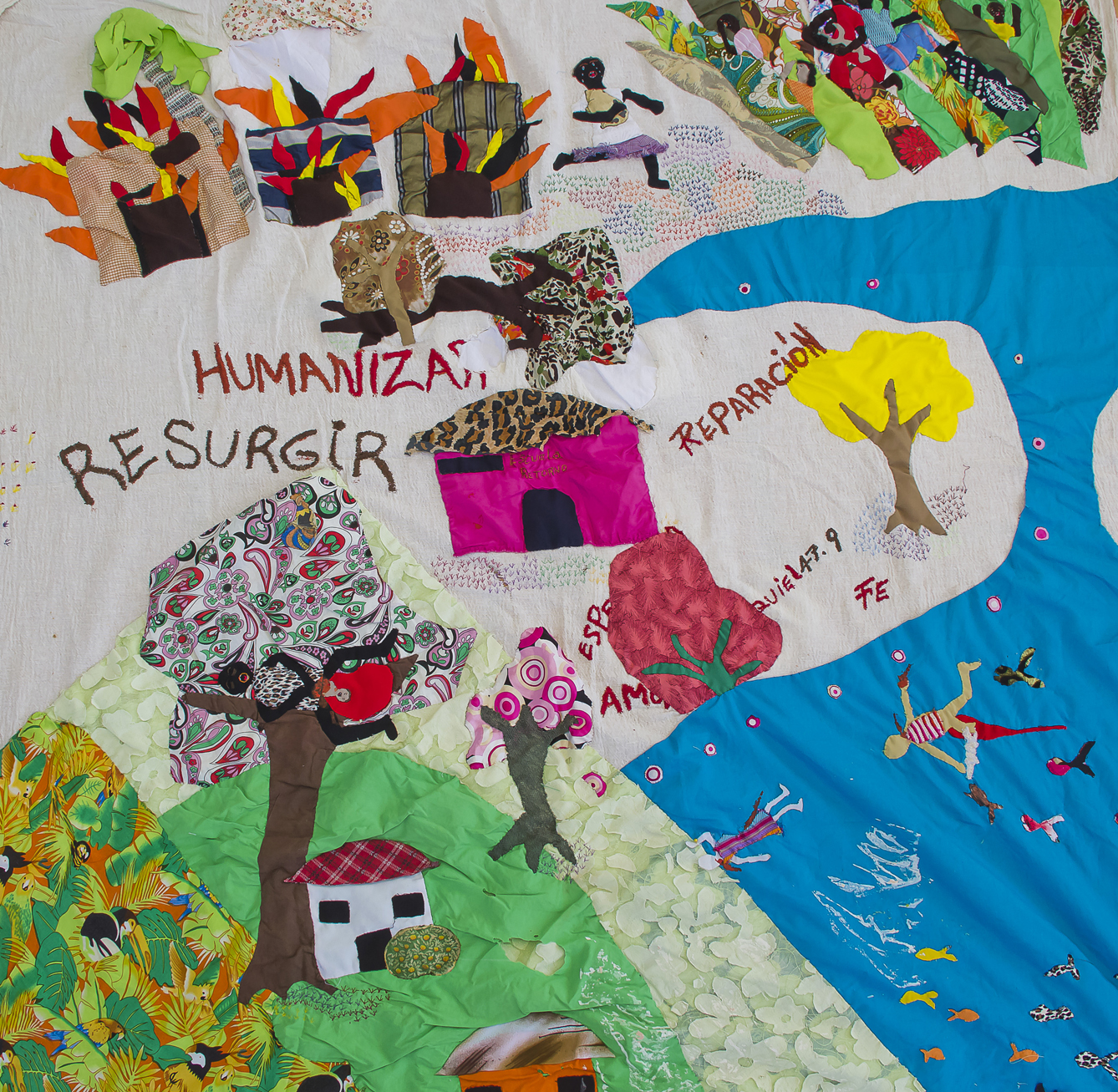
Some fabrics use the written message with the idea of learly communicating the real meaning they are trying to convey by resurfacing, humanizing and repairing Mampuja’s community difficult past.
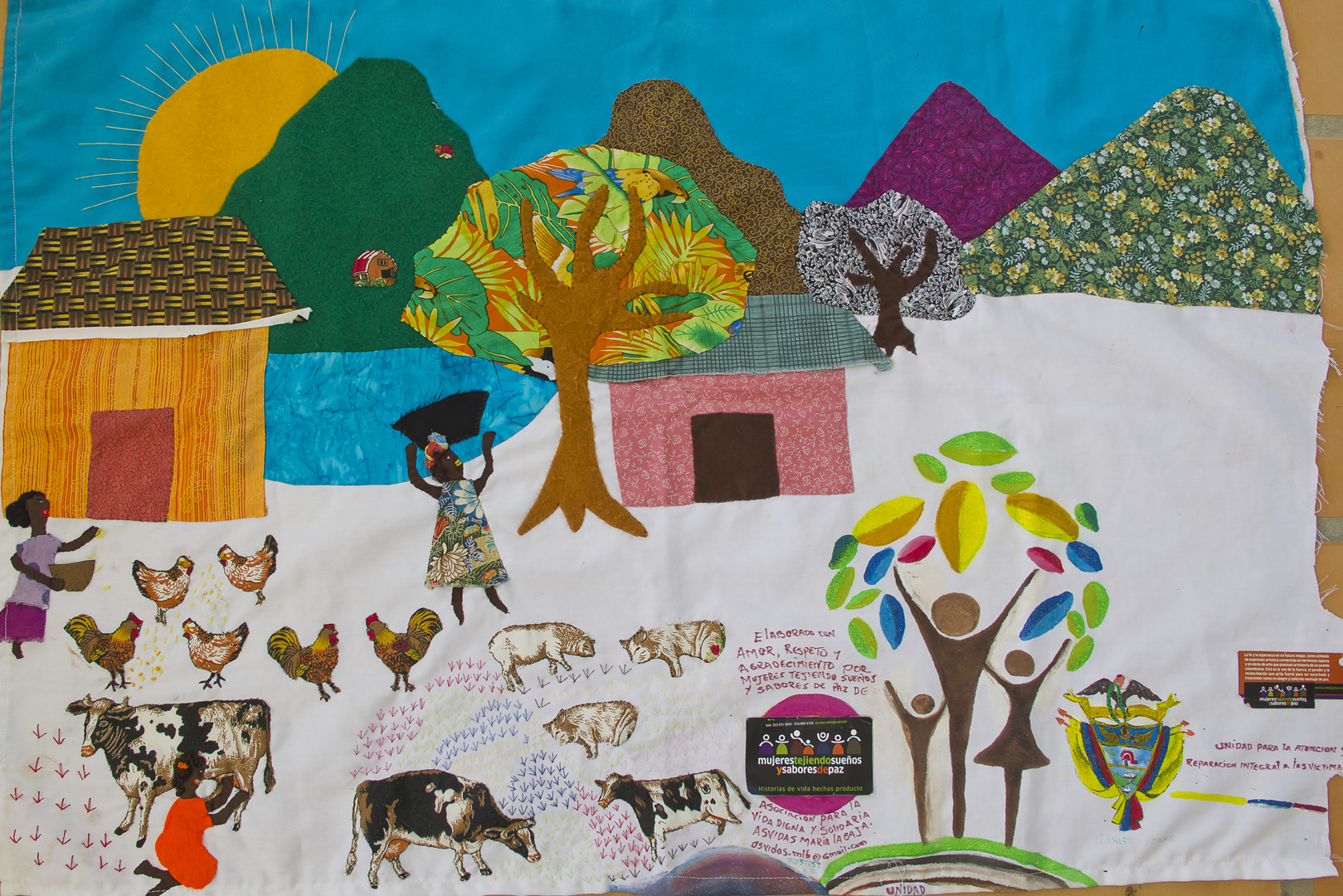
This woven fabric has a very meaningful message. There is a written message that says elaborated with love, respect and appreciation for women weaving dreams and tastes of peace. The Colombia emblem and the colors of the flag are also represented as symbols of national identity.
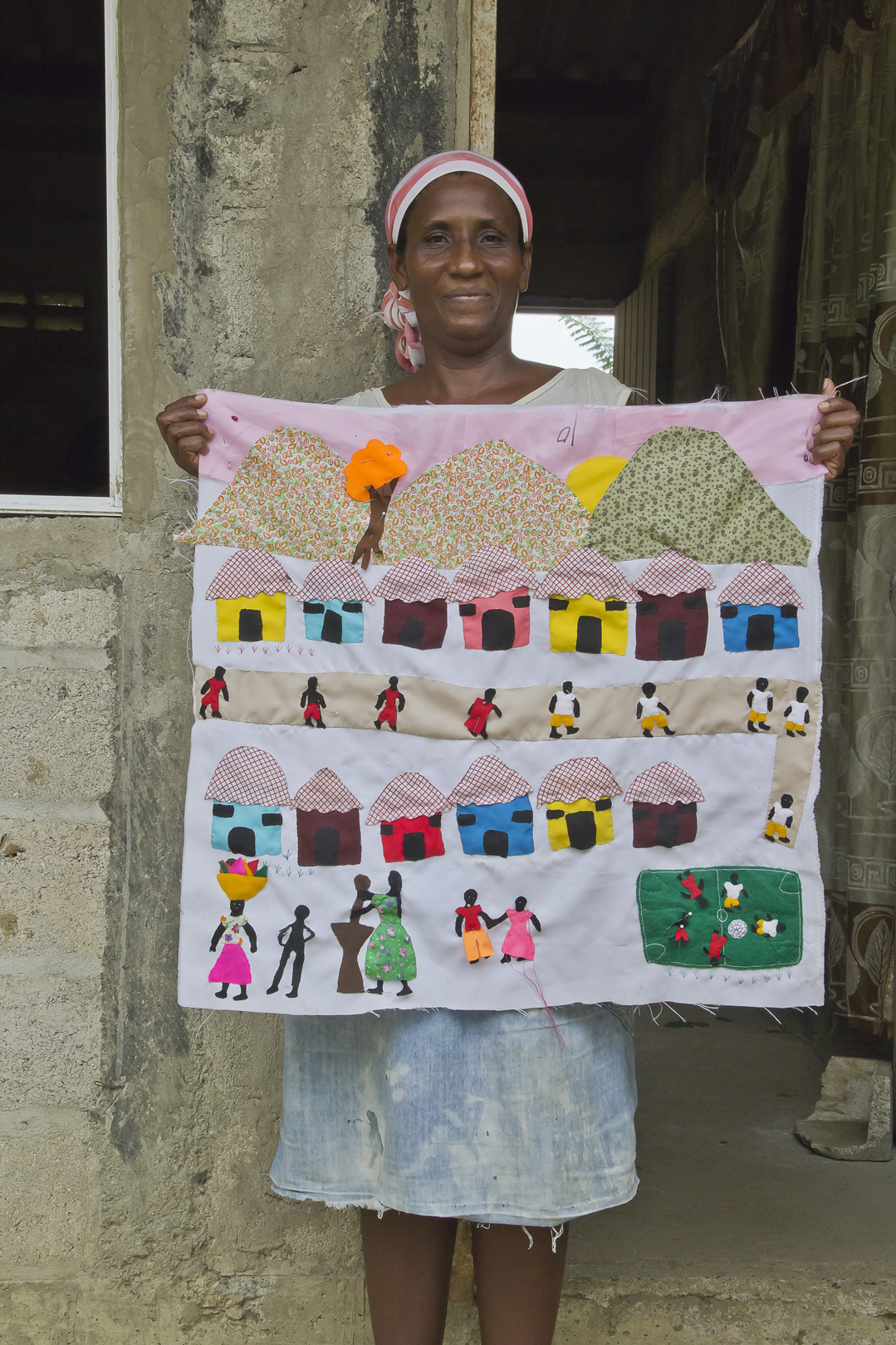
Here a woman is showing her woven fabric artwork representing the idea of community integration, her love for the sports and her attachment to cultural traditions
















This series of photographs document the reconstruction and transformation of a community through an art project proposed by women, “weaving for peace”. It is based on the idea of recreating stories of hope and reconciliation through “weaving.” The first four images present the traces of the destruction of the town of Mampujan in the Caribbean region of Bolivar in Colombia by the Guerrilla in March 2002.
This photo represents the way nature is erasing traces of violence by taking over the physical remains of destroyed houses.
In this picture the room was transformed into a natural landscape. There are, however, still remains of human present that remind us of past memories, as for instance the color of the painting on the wall.
In this photo, I was attracted by the light and the frame of the window as it encloses the passing time, as well as, the traces, vestiges and shadows of the natural surroundings it embraces.
In this image girls are playing in front of a re-contructed house, they represent the vigorous life of the emerging town after fourteen years of rebuilding done step by step by the demanding enterprise of their parents work.
In this scene, I was impressed by how the transition to a reinvigorated peaceful environment influences the town life. This young girl adapted her kitchen outside of her house. She improvised a dish-washer with rustic tools, It seems she is washing her sadness while she is forgotten the violence.
This woman is one of the leaders of the “weaving for peace” project. She helps the community through her teachings, and by providing them the materials and the space to gather. It is intersting to see how women work every day with energy, hope, and desire so see changes in their community.
This is how good actions by young people promote peace by helping children to study, and to use their time doing meaningful activities to the community. They are even sometimes giving advices and promoting good habits. Here a young girl takes care of the kids while their parents are working.
This is a house donated by the Colombian Government. It is a small house for a single family. They are now back to their land where they can farm, keep livestock and eventually improve their house for better conditions.
This image shows that this space was at a given point in time a children’s room. The same space was used to create a mural that served as inspiration for one of the weaved pieces.
This image is very representative of Mampujan’s community. It tells the experiences of its inhabitants as they go through the process of relief and forgetting their violent past. The rebirth of the town is then illustrated through very expressive and colorful figures weaved on the fabric.
Working in community is for Mampujan’s inhabitants a good opportunity also for economic benefits achieved by the sale of their fabrics in local traditional craft markets.
By rebuilding past memories and seeing then as an opportunity for change, Juana tries to make innovative designs that relate to her own culture, promoting, at the same time, diverse social values and presenting its traditions to a large audience.
Some fabrics use the written message with the idea of learly communicating the real meaning they are trying to convey by resurfacing, humanizing and repairing Mampuja’s community difficult past.
This woven fabric has a very meaningful message. There is a written message that says elaborated with love, respect and appreciation for women weaving dreams and tastes of peace. The Colombia emblem and the colors of the flag are also represented as symbols of national identity.
Here a woman is showing her woven fabric artwork representing the idea of community integration, her love for the sports and her attachment to cultural traditions